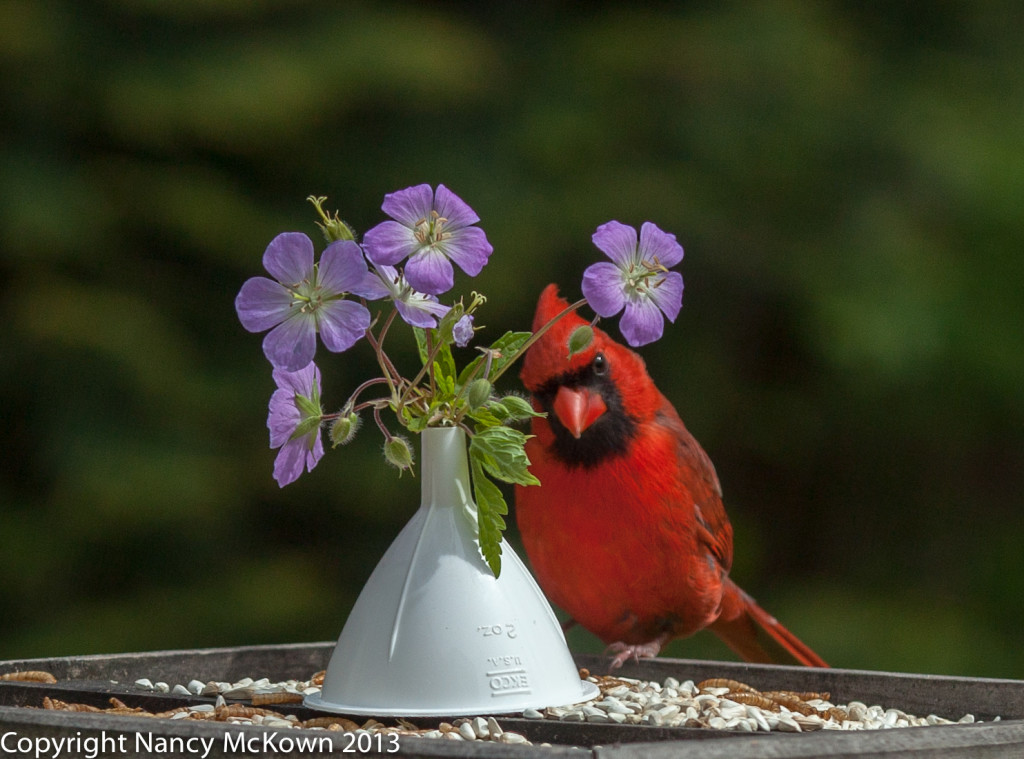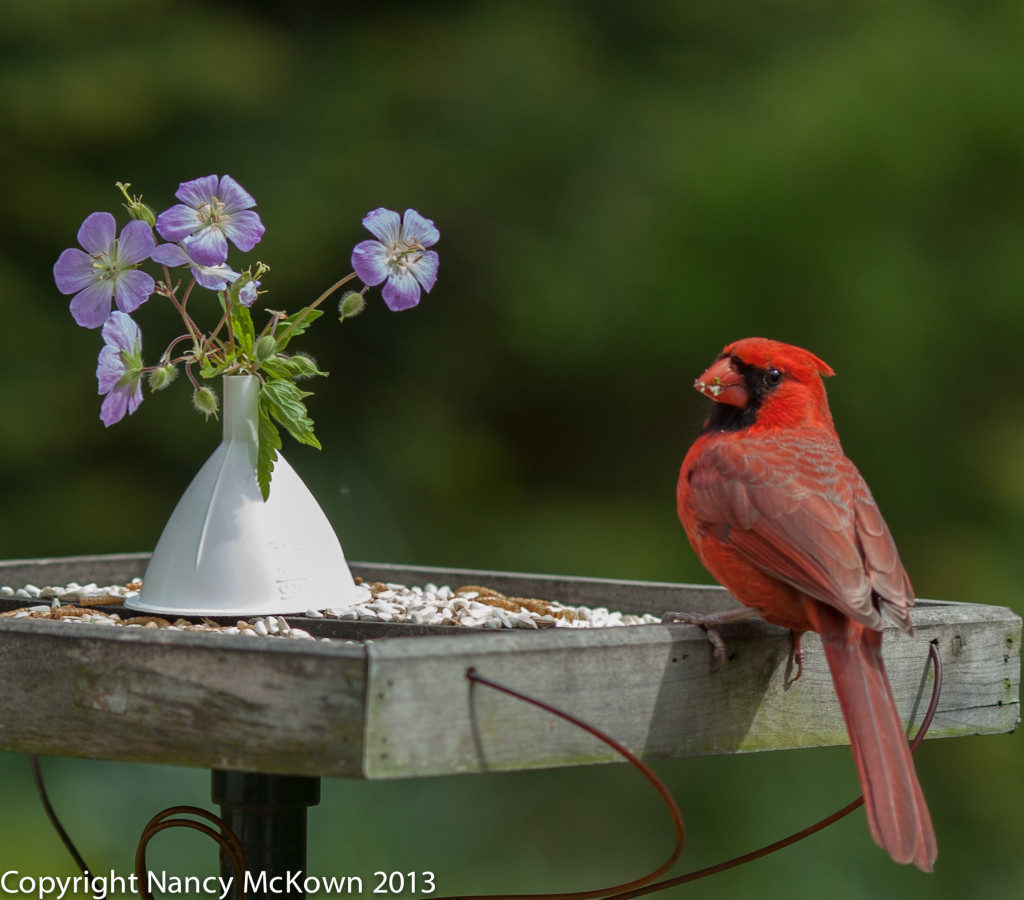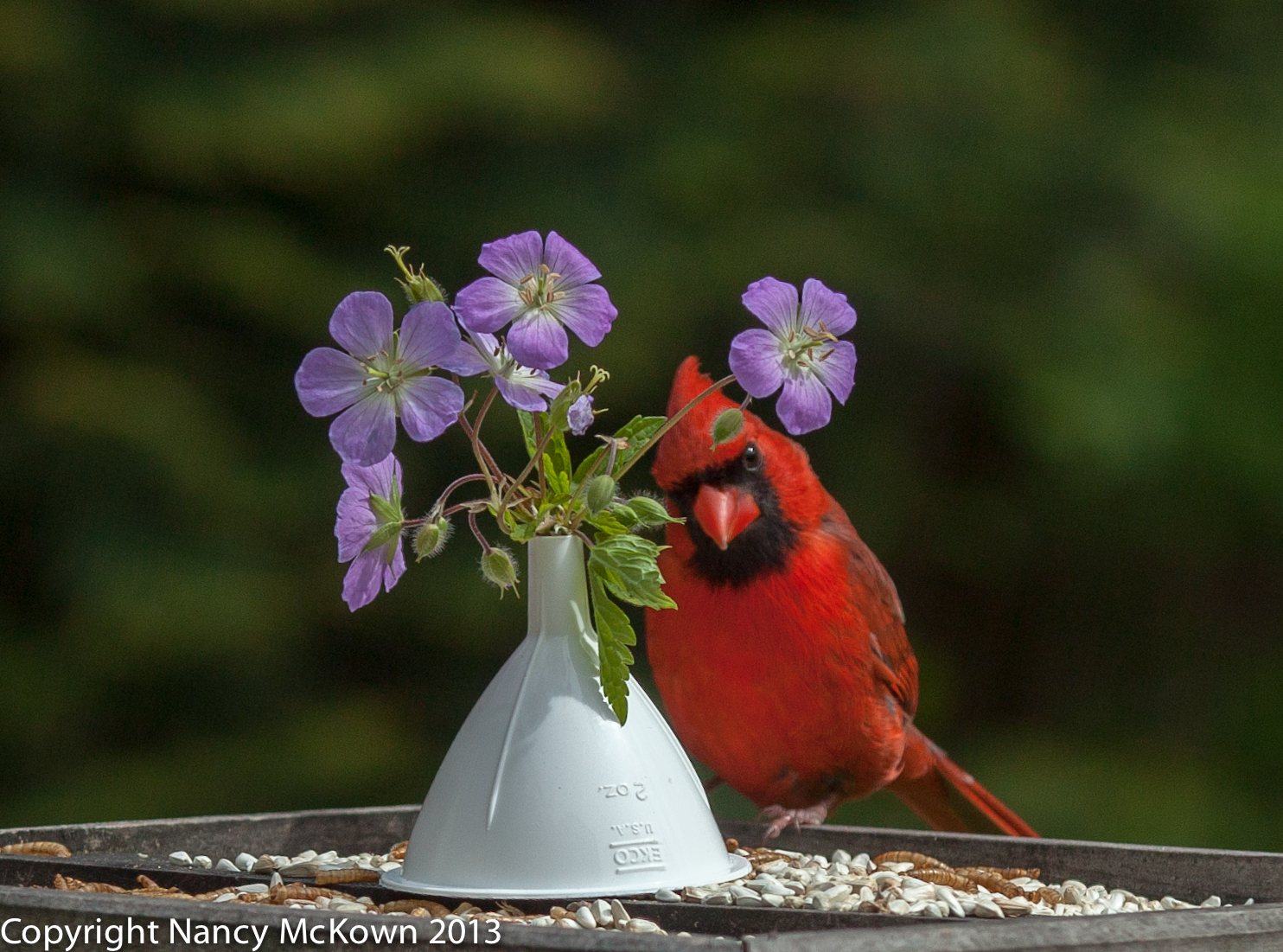Where the Birds Are
A lot of days, I concentrate on photographing the birds in my yard. I think the feeder is one of the more boring places on which to point my camera. But on those days that I am stuck inside, that’s where the birds are, at least the ones that I can readily see and reach with my camera.
I am constantly trying to improve my photography skills, and to do that I have to practice. Practice is more productive when I have a purpose in mind; when I deliberately focus on getting better at a particular skill.
This day, I decided to concentrate on depth of field. Depth of field is the “space” in your photograph that’s in focus. More specifically, it’s the distance between the closest point that is in focus and the farthest point that is in focus.
Understanding Depth of Field – Techie Alert
To determine what’s in focus (Depth of Field) and what is not in focus (Blur), the photographer must consider 3 things:
1) Aperture setting,
2) Focal Length of the Lens
3) Distance the Photographer is to Her Subject
Longer lenses (200mm and longer) tend to give a very shallow depth of field (less space in focus). To further complicate matters, the farther away the photographer is to her subject, the more depth of field; or the more space you will have in focus.
Aperture Settings for Background Blur
Luckily, long lenses and long distances between photographer and subject are pretty common scenarios for bird photographers. That being the case, you just have to determine what aperture to use to achieve a good balance of subject in focus and background blur.

The Impact Aperture has on Photographs
A friend of mine asked how I pasted in the beautiful blurred background on my bird photographs.
Argle Bargle! There is no emoticon to express how I felt when I heard that.
Understanding aperture is the cornerstone to achieving creative control of your photos. Aperture is measured in “F Stops”, and is the size of the opening in the lens that the photographer sets before a picture is taken.
Larger apertures produce more background or foreground blur and less space in focus. Smaller apertures produce greater depth of field, or more space in focus. If there are multiple subjects on which to focus and these subjects are not the same distance from the photographer, the depth of field needs to be tightened up so all your subjects are in focus. Given the right light and lens, you can set your aperture so small that everything in the frame will be in focus; nothing would be blurred.
The Quality of Out of Focus Areas
A photography term to describe the quality of background or foreground blur is Bokeh. “(BOKEH = noun, a Japanese term for the subjective aesthetic quality of out-of-focus areas of a photographic image.)” Keep in mind that making a judgement on the bokeh quality of a photograph is highly subjective and hard to quantify. Generally, very pleasing bokeh is a function of the lens. A very high quality lens will most likely produce a very pleasing bokeh.
Achieving Balance in Your Photographs
You want to achieve a nice balance in your photographs. All of the subject(s) in your photo must be in focus and stand out from the background. The blurred background should be pleasing to the eye and not distract the viewer from the subject of the photo.
Making the Ordinary Photograph, Extraordinary
So with better control of my depth of field in mind, what can I do to make the birds on bird feeder photos more interesting? How can I take an ordinary scenario and turn it into an extraordinary photograph?
I asked my husband (Camera Boy) if he would pick some flowers from our yard to decorate our dinner table. He put together a beautiful bouquet for us and then decided to decorate the bird feeder platform with a bouquet as well. I didn’t think much of it, a little color is always nice. But then I noticed the difference it made.
Birds are always looking back at me through the window. Most times, they are just being cautious, gauging when/if they need to make a quick get away. They also have a “look” for me when feeder food is low and needs refilling. And sometimes they are just interested in what we are having for dinner.

In the first photo, this male cardinal flew in and positioned himself to the side of the flower bouquet on the feeder. Then he looked directly at the camera and tilted his head slightly. That’s all it took. The cardinal looks as though he is offering a gift to me. The flower bouquet adds a whole new dimension to the photograph. In the second photo, the cardinal has started to eat, and looks at me over his shoulder. The flower bouquet adds something intangible to this photograph as well.
It’s so easy to identify with bird behavior. In these photos, I sense attitude, intent, and caring. I find this momentary connection between my subjects and myself gratifying on a personal level. And it’s captured forever in the photographs.
And how about that Bokeh and Depth of Field!!









